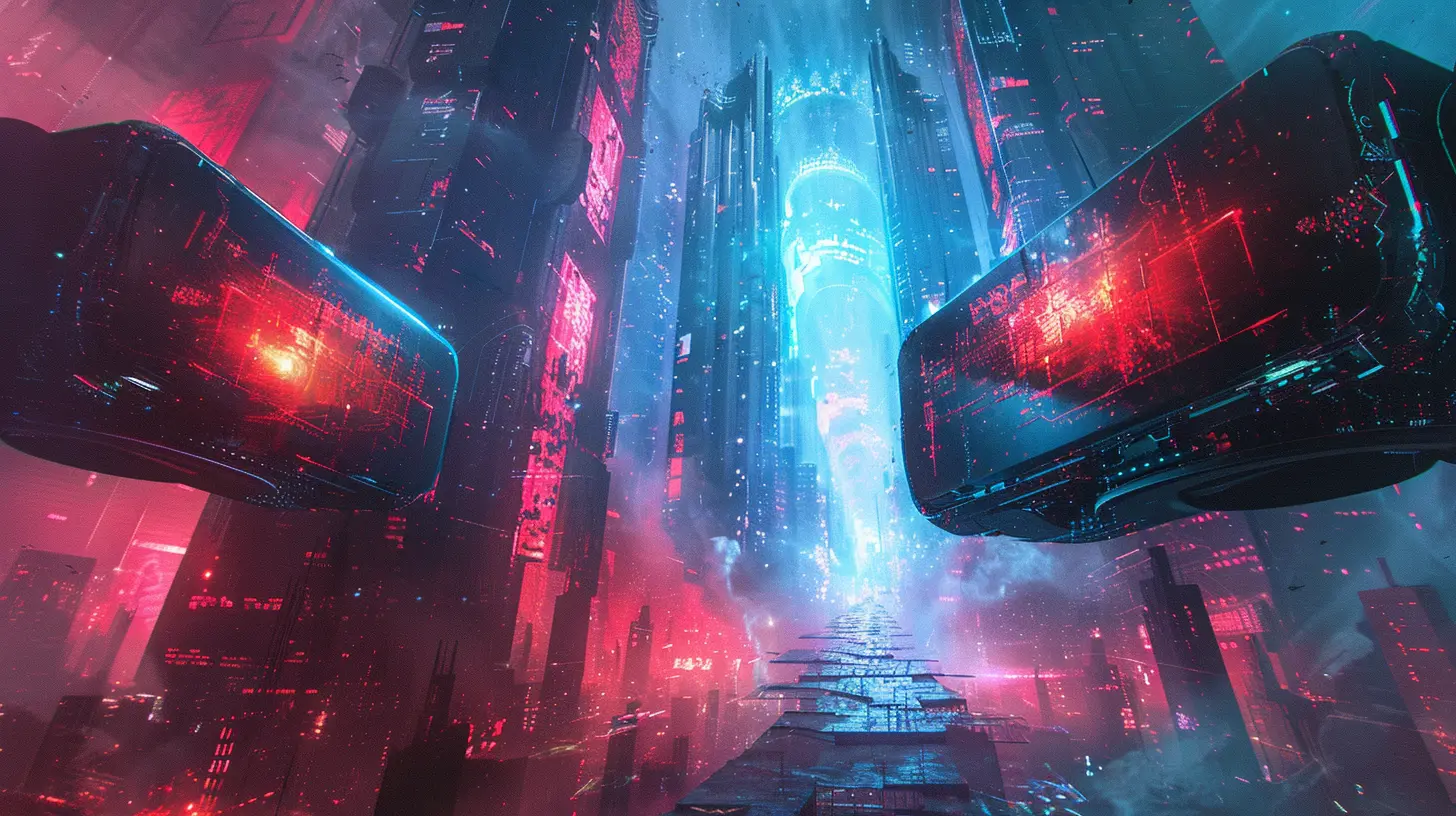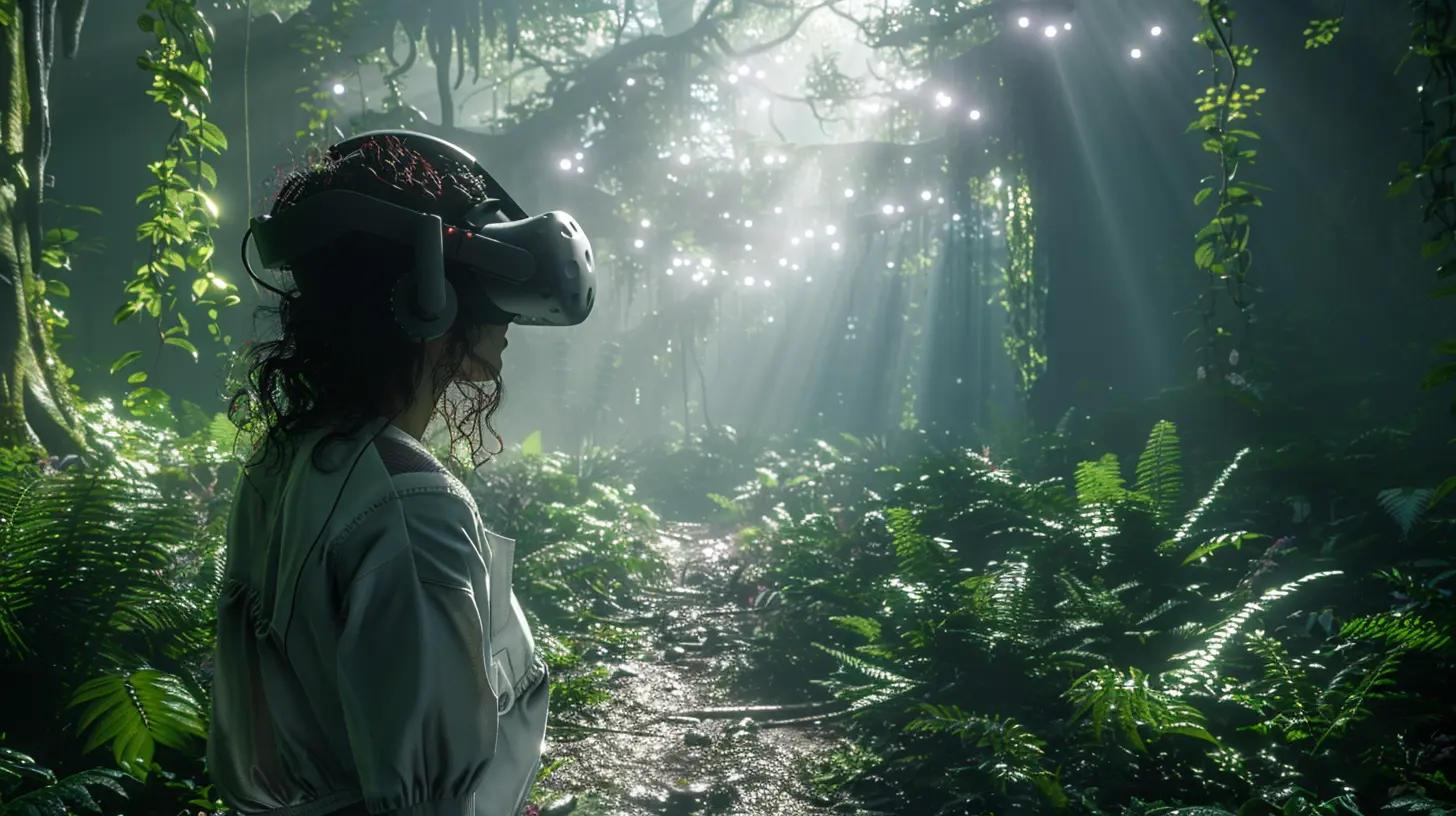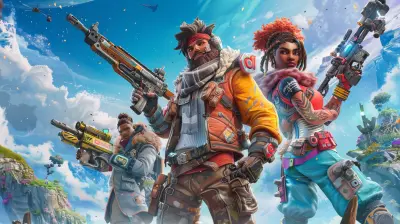Virtual Reality and the Indie Game Revolution
6 October 2025
If you've been keeping up with gaming trends, you've probably noticed how Virtual Reality (VR) has stormed onto the scene in recent years. VR isn't just the shiny new gadget anymore—it's a full-on movement that’s transforming how we play games. And here’s what’s really cool: indie developers are right in the middle of this revolution, shaking things up in ways that big studios simply can't or won’t.
But how did we get here? Why is VR such a big deal? And what's the magic sauce that makes indie developers the perfect match for this tech? Let’s dive headfirst into the world of headsets, boundary-breaking games, and scrappy indie teams who are rewriting the rules.
A Quick Look at How VR Got Here
To truly understand how Virtual Reality is changing gaming, we’ve got to look back a bit. The concept of VR isn't new. People have been dreaming about immersive digital worlds since the days of clunky arcade machines in the '80s and '90s. Remember the Virtual Boy by Nintendo? Yeah, that didn’t go as planned (red and black graphics aren’t exactly “immersive”). But fast forward to the 2010s, and suddenly things got real—with devices like the Oculus Rift, HTC Vive, and PlayStation VR leading the charge.What makes VR different from traditional gaming? Immersion. When you strap on that headset, you’re not just playing a game—you’re inside it. You’re dodging bullets, climbing mountains, and punching virtual bad guys. VR makes games feel alive, and that’s why it’s a game-changer (pun totally intended).
Why Indie Developers Love VR (And Why VR Loves Them Back)
Here’s the thing about VR: it’s still kind of… experimental. Sure, big studios are dabbling in it with games like Half-Life: Alyx, but for the most part, VR gaming is wide open. And that’s where indie developers thrive. Indie studios are like the punk rock bands of gaming. They’re scrappy, full of heart, and unafraid to break the rules. And VR? It’s basically a blank canvas for them to go wild on.Think about it—big studios often stick to tried-and-true formulas because they’ve got millions of dollars on the line. But indie teams? They can throw crazy ideas into the mix without worrying about pleasing shareholders. That’s why so many groundbreaking VR games come from smaller developers. They’re the ones pushing boundaries and asking, “What if we did this instead?”
Take Job Simulator by Owlchemy Labs, for example. It turned the dull concept of “working” into one of the funniest, most creative VR experiences ever. Or consider Beat Saber, the rhythm slasher from indie studio Beat Games that had gamers sweating and slicing neon blocks to the beat of catchy music. These are the kinds of experiences you just don’t see in your standard shooters or RPGs.
How VR Benefits from Indie Creativity
Let’s be honest—VR hardware is expensive. It’s not like buying a console, where you know you’re getting blockbuster games right out of the gate. VR needs unique, jaw-dropping experiences to justify the cost. And who’s better at delivering that than indie devs?Indie developers have this uncanny ability to create niche, out-of-the-box experiences that feel tailor-made for VR. They focus on ingenuity over flashy graphics because, let’s face it, they don’t have the budgets to compete with big studios. Instead, they double down on creativity. They find fresh ways to use VR tech that big studios wouldn’t even think of because they’re too busy churning out sequels.
Take SUPERHOT VR as an example. It’s not about high-end visuals—it’s about manipulating time and movement in a way that feels utterly unique to VR. Or there’s Virtual Virtual Reality, which pokes fun at VR itself while delivering a surreal, thought-provoking experience. These games make you think, “Why hasn’t anyone done this before?” And the answer is simple: because indie devs aren’t afraid to take big risks.
The Tools Level the Playing Field
Another reason we’re seeing indies dominate in the VR space? The tools. Game engines like Unity and Unreal have made it easier than ever for small teams (or even solo devs) to create VR games. These engines come with built-in support for VR devices, meaning developers don’t have to reinvent the wheel. Instead, they can focus on crafting amazing experiences.And let’s not forget about crowdfunding platforms like Kickstarter or the rise of Early Access on Steam. These give indie developers a way to gather funding and feedback from players without having to rely on big publishers. For VR, where the audience is still growing, this direct connection to fans is absolutely crucial. It’s a win-win: players get to try out innovative games early, and devs get the support they need to keep going.
Challenges: Indie Devs and the VR Gamble
Of course, it’s not all sunshine and rainbows. Indie developers diving into VR face some pretty big challenges. For starters, VR is still a niche market. Not everyone owns a headset, and that limits how many people will ever play their games. And while VR gamers are passionate, they’re also picky. When you’re strapping a screen to your face, you want something that works flawlessly. Unpolished or buggy games just won’t cut it.Then there’s the cost. Developing for VR is expensive, even for indies. Beyond software tools, devs need access to the latest hardware for testing, and that can add up. Plus, marketing a VR game is tough. How do you convince someone your game is worth playing when they can’t fully appreciate it until they’re wearing a headset?
But here’s the thing—these obstacles haven’t stopped indie devs from rolling up their sleeves and making magic. If anything, it’s made their success stories even more impressive.
VR and the Future of Indie Gaming
Looking ahead, it’s clear that VR and indie games are going to keep growing together. As hardware gets cheaper and more accessible (here’s looking at you, Meta Quest 3), the audience for VR will expand. And that means more opportunities for indie developers to shine.We’re also seeing new innovations like hand tracking and increased haptic feedback that could unlock even more creativity in VR games. Imagine a horror game where you can “feel” the cold wind of a haunted house or an adventure game where you physically climb mountains using just your hands. These are the kinds of experiences that indie devs are already exploring.
Ultimately, VR and indie games are a match made in gaming heaven. VR opens up endless possibilities, and indies are the daring innovators willing to take the leap. Together, they’re not just reshaping gaming—they’re reimagining what gaming can be.
Final Thoughts
Virtual Reality isn’t just the future of gaming—it’s already here, and indie developers are leading the charge. Sure, there are challenges. Yes, the market is still growing. But when you look at the creativity, passion, and sheer innovation coming out of the indie VR scene, it’s impossible not to feel excited about where we’re headed next.So whether you’re a seasoned gamer or someone who’s just curious about the hype, keep an eye on those indie studios. They’re the underdogs turning the VR industry on its head, and there’s no telling what they’ll come up with next. One thing’s for sure, though—it’s going to be wild.
all images in this post were generated using AI tools
Category:
Virtual RealityAuthor:

Whitman Adams
Discussion
rate this article
1 comments
Rosalie Howard
This article highlights the transformative impact of virtual reality on indie game development, showcasing how smaller studios harness innovative technology to create unique, immersive experiences. It’s an exciting era where creativity thrives, pushing boundaries and redefining gaming standards.
October 7, 2025 at 2:31 AM

Whitman Adams
Thank you for your insightful comment! I'm glad to hear that the article resonates with you. Virtual reality truly is a game-changer for indie developers!


